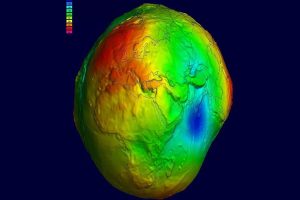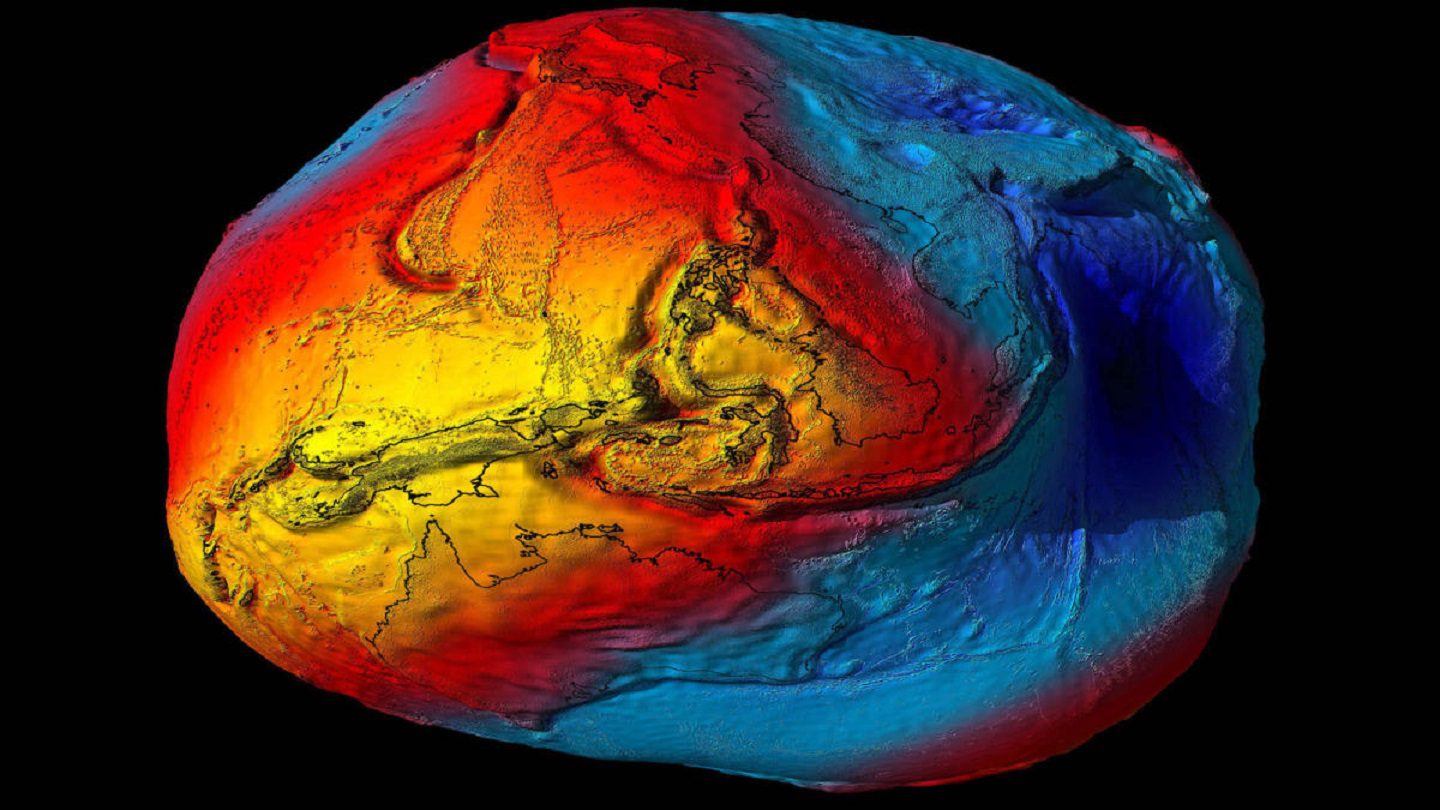Indian Ocean gravity hole: A captivating enigma lies beneath the surface of the Indian Oceanan intriguing “gravity hole.” This peculiar phenomenon exhibits an area where Earth’s gravitational pull is weaker, resulting in a sea level drop of over 328 feet (100 meters).
For decades, geologists have puzzled over the origin of this anomaly. However, a recent study by researchers from the Indian Institute of Science in Bengaluru, India, sheds light on the enigmatic “gravity hole.” Their findings, published in the journal Geophysical Research Letters, propose that the formation of this phenomenon is attributed to plumes of magma emanating from the planet’s depths, akin to those leading to the creation of volcanoes.
To reach this hypothesis, the team employed powerful supercomputers to simulate the area’s geological evolution, stretching back approximately 140 million years. Central to their study was an ancient ocean that no longer exists.
The Earth, far from a perfect sphere, boasts a density and property variation, resulting in non-homogeneity. Consequently, Earth’s surface and gravity are influenced by these differences. The researchers explain that the geoid, which refers to the level that water takes on the Earth’s surface, is determined by the density disparities within the planet’s interior.
The “gravity hole” or Indian Ocean geoid low, identified as the lowest point in the geoid with the most significant gravitational anomaly, covers approximately 1.2 million square miles (3 million square kilometers) and was first discovered in 1948 by Dutch geophysicist Felix Andries Vening Meinesz. Its formation remained a perplexing puzzle until now.


By running 19 simulations dating back 140 million years, the scientists recreated the shifting of tectonic plates and the behavior of magma within the mantlethe thick layer between Earth’s core and crust. Remarkably, six of these simulations demonstrated the formation of a geoid low akin to the one found in the Indian Ocean. These scenarios hinged on the presence of magma plumes near the geoid low and the mantle’s structure in the vicinity.
The plumes are believed to have arisen following the ancient ocean’s disappearance when India’s landmass drifted and eventually collided with Asia millions of years ago. This tectonic activity possibly triggered the emergence of plumes, bringing low-density material closer to the Earth’s surface.
As for the future of the geoid low, its fate remains uncertain. Its persistence or eventual disappearance relies on the movement of mass anomalies within the Earth over the course of hundreds of millions of years.
Notably, the research has garnered interest among geologists who acknowledge the intriguing hypotheses and call for further exploration in this field. Despite some noted flaws in the study’s execution, the researchers’ computer simulations have made significant progress in understanding the origin of the Indian Ocean geoid low.

